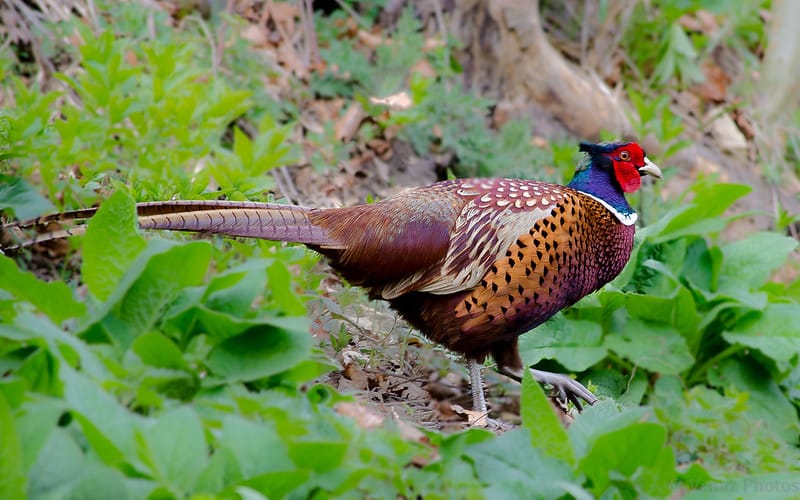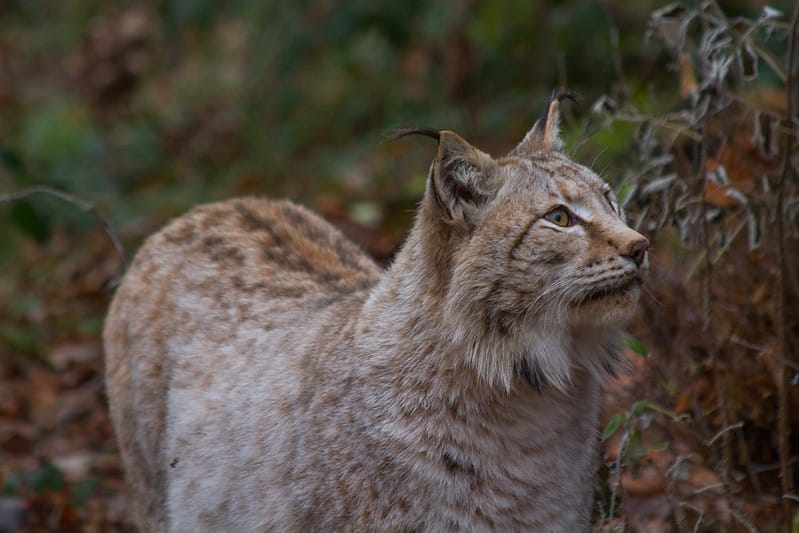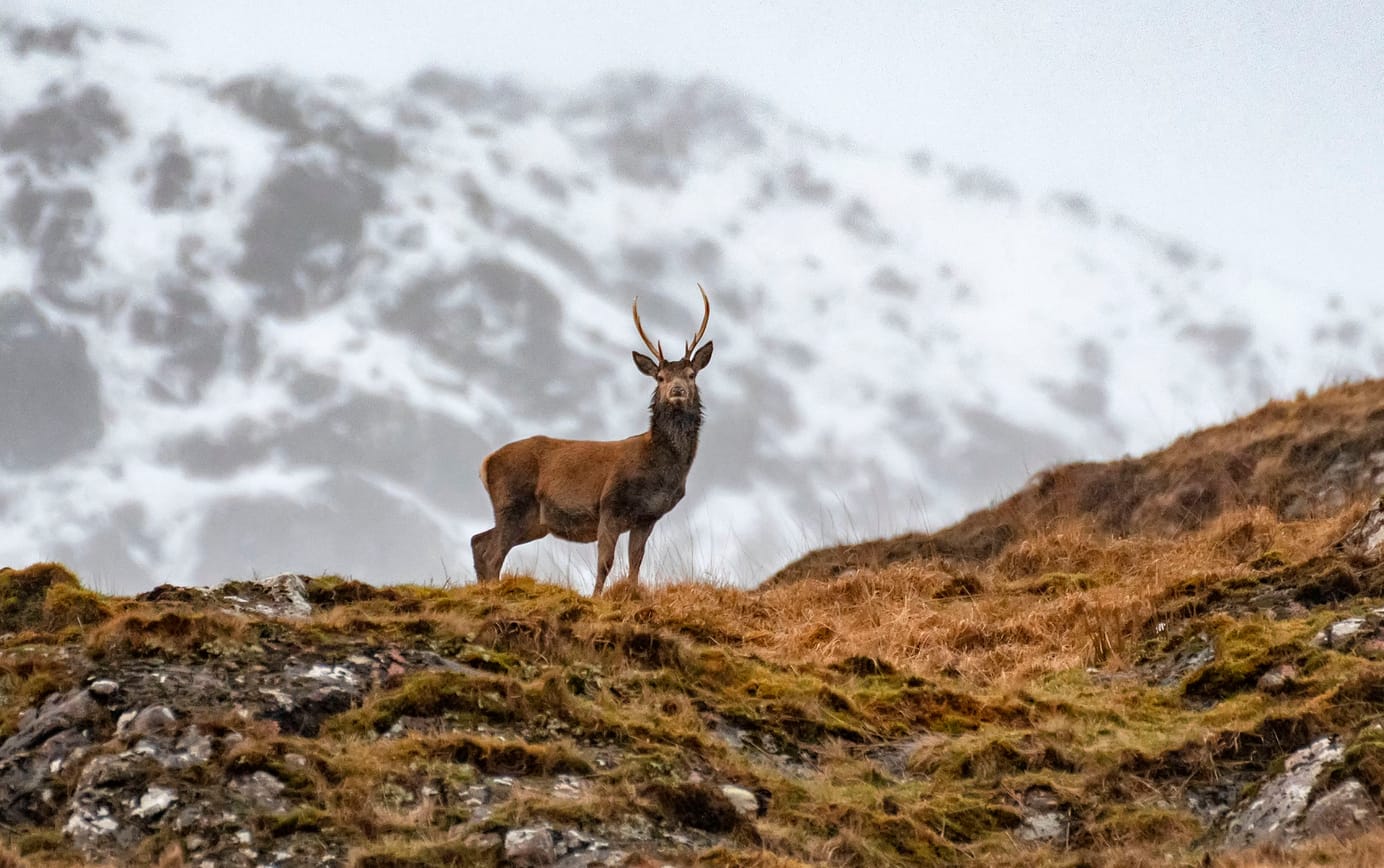
Autumn Statement & Deer Stalking
The latest news on nature and conservation in Britain.
Today's digest is free to read, so feel free to forward, post on social media, or generally pass it on to anyone you think might be interested.
National news
Spending | Nature was conspicuously absent from the government’s Autumn Statement, delivered on Wednesday. The RSPB posted a disparaging response on Twitter, criticising the statement as another ‘missed chance’ for the government to prove its commitment to restoring nature. The statement did include a push for better infrastructure and housing, and – as noted by the Wildlife and Countryside Link – included a £110m fund for local nutrient mitigation to tackle pollution from new homes. This, however, was the extent of the good news for nature. Meanwhile, a group of leading environmental organisations have written an open letter to the Scottish government warning that the country will miss its environmental targets if deep cuts to funding are not reversed. Since 2010, core funding for NatureScot has fallen by 40%, while funding for SEPA, which protects water quality, has decreased by 26%. The charities argue that the cuts endanger the government’s key conservation targets, including its pledge to protect 30% of nature by 2030. The letter urges the government to increase environmental spending at its next budget, due in December. The Guardian covered the news.
Landscapes | Areas of Outstanding Natural Beauty have been renamed as National Landscapes in a move to ‘reflect their national importance’. The 46 designated areas cover 14% of England, Wales and Northern Ireland, including a vast array of landscapes from wild coastlines to functioning farmland. Tony Juniper, chair of Natural England, said that AONBs had helped protect the beauty of landscapes for decades, but today ‘we need so much more from these wonderful places’, from adapting to climate change to restoring depleted wildlife and producing food. The new name also comes with a set of ambitious aims, including the creation of 10,000 hectares of wildlife-rich habitat outside of SSSIs, and the planting or regeneration of 36,000 hectares of woodland. BBC Countryfile and ENDS reported the news.
Oil | More than a quarter of the offshore oil and gas sites approved by the government last month sit within Marine Protected Areas, according to analysis by Unearthed, the journalism arm of Greenpeace. Despite being hailed as ‘common sense’ by the government, ocean conservation groups have warned that the activity within conservation areas could cause devastation to vulnerable wildlife and ocean habitats. Hugo Tagholm, director of Oceana UK, said the decision to grant the licences within MPAs ‘makes a mockery of our climate pledges, decimates our already suffering ocean life and threatens coastal communities’. The offshore sites carry a host of threats to marine biodiversity, ranging from oil spills through to seismic blasting and destruction of seabed ecosystems. The MPA most affected by the licences is the north-east Faroe-Shetland channel, which acts as a migratory corridor for marine mammals including fin and sperm whales. The Independent, Edie and iNews covered the news.
In other news:
- Chair of Natural England, Tony Juniper, has said building new housing and better protecting green spaces should not be seen as opposites, reports the Guardian.
- Nearly two-thirds of popular swimming spots in English rivers have unsafe levels of pollution, reports the Times. The same paper also reported that sewage discharges in Scotland are going largely unmonitored.
- A report from the British Trust for Ornithology has set longevity records for 11 bird species, including a 25-year-old black guillemot, reports BirdGuides.
- Scottish Forestry has announced it is tripling the grant rate for farmers and crofters to control bracken and encourage new woodlands.
- The CEO of Natural Resources Wales has told MPs that prosecuting water companies does not improve the environment, reports the Cymru Nation.
Across the country
Glen Spean | NatureScot is piloting an initiative offering local residents the chance to stalk deer at the Creag Meagaidh nature reserve in the Highlands. Community models of deer management are common in other European countries, but this is the first project to be tested on publicly owned land in Scotland. The initiative offers residents the opportunity to learn stalking skills, and – when fully qualified – gain free access to the reserve to shoot deer for their own consumption. The project will run alongside the reserve’s deer cull, which helps to protect regenerating native woodlands, and the wider community will benefit from ultra-local venison. Bob Murdoch, a resident taking part, called the scheme ‘groundbreaking’, adding that stalking opportunities for locals are limited by cost and private land ownership.
Gloucestershire | As British winters heat up, migratory Bewick’s Swans are arriving later and later to overwinter. This year’s first pair of swans arrived at Slimbridge Wetland Centre in Gloucestershire last week, marking the latest arrival of the species to date. Conservationists started monitoring the returning flocks in 1965, constituting one of the longest-running studies of a single species in the world. The annual flock number has also dwindled from 700 to around 100 individuals. Kane Bridges, a senior research officer at the centre, said the ‘saddest fact’ was that one day the swans may never return to winter in Britain. BirdGuides and the BBC covered the news. Elsewhere, a survey at Bath City Farm has found around 30 species present in winter which previously would have only been found in summer, including the wasp spider and tiger moth. The BBC and the Guardian reported the news.
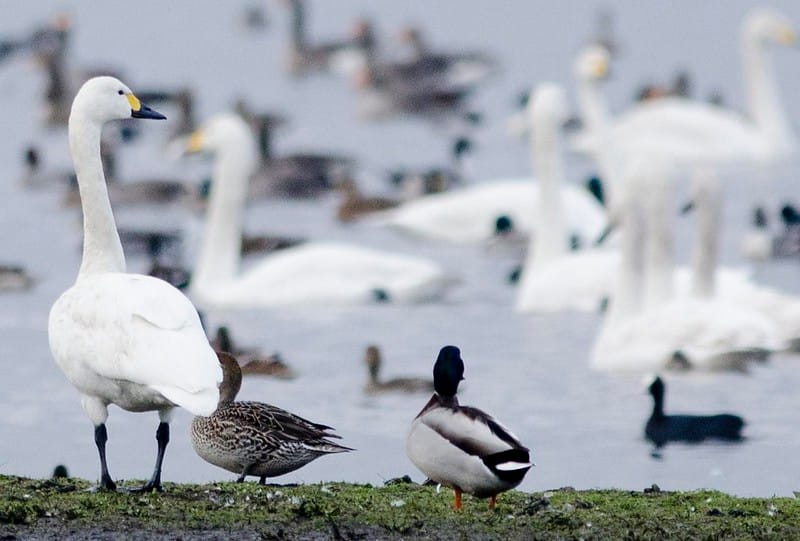
Humber | The high court has ruled that the government and the Environment Agency acted unlawfully when they failed to protect and restore a waterway in the Humber district. The judicial review was brought by Fish Legal and Pickering Fishing Association over the management plan for the Costa Beck river, which used to be one of the UK’s top fly fishing spots for wild trout and grayling. Recently, however, the beck is ‘failing for fish’ largely due to sewage pollution. Yorkshire Water discharged into the beck more than 250 times in 2020 and 400 times in 2019. The judge ruled that Defra and the EA failed in their legal duties to review, update and enact measures to restore rivers under the Water Framework Directive regulations. Lawyers believe the ruling could open the door for similar challenges across the country. The Guardian and ENDS reported the news, and Fish Legal summarised the ruling in a Twitter thread.
Elsewhere:
- Campaigners have warned that salmon in the Wye could be extinct in six years due to pollution levels, reports the BBC.
- Nottinghamshire Wildlife Trust has received £491,000 to bring water vole populations back from the brink of extinction, reports the BBC.
- Derbyshire County Council has revealed plans to create a community forest of 300,000 trees over the next two years, reports the Derby Telegraph.
- The Hertfordshire Wildlife Trust is working to track down maternal colonies of one of the UK’s rarest bats – the Barbastelle – in order to protect them.
- NatureScot is exploring the potential for a large-scale peatland restoration project at Hermaness reserve in Shetland, reports BirdGuides.
- Staffordshire Wildlife Trust has launched a website to ensure that funds from the Biodiversity Net Gain rules are spent in the right places to best benefit local wildlife.
- A new nature reserve in Wiltshire, comprising twelve hectares of restored water meadows, has opened to the public, reports BirdGuides.
- Natural Resources Wales has installed 1.5 miles of fencing on Anglesey to protect coastal lagoons at Cemlyn Bay from being polluted by livestock waste, reports the Daily Post.
- The RSPB is aiding the recovery of little terns at Chesil Beach in Dorset by building fences to keep hedgehogs out, reports the BBC.
- Plymouth City Council’s plans for a new city-centre water system include reed beds to help filter out pollution, reports the BBC.
- A Herefordshire farmer who served jail time for bulldozing a section of riverside has said he has no regrets, reports the Times.
- A 17-hectare wetland project has been approved near Guist in Norfolk to prevent housing pollution from reaching a river, reports the BBC.
- Bitterns are making a comeback with over 200 pairs found across the UK, report the BBC.
- Planting has begun on a rural hedgerow connecting the New Forest and the South Downs with a ‘nature recovery corridor’, reports the BBC.
- A report on red squirrel numbers in northern England found an increase in the endangered animal in Northumberland, although overall numbers were down, reports Chronicle Live.
Reports
Heritage | Extreme weather caused by climate change is the ‘single biggest threat’ to the UK’s heritage, according to a report from the National Trust. The body is responsible for taking care of 250,000 hectares of land – including 780 miles of coastline – and 28,500 historic buildings. The report found that 71% of its sites are at medium or high risk of being impacted by climate change-related events such as flooding, wildfires or drought by 2060. Already, the Trust is spending millions to protect sites, from ancient hill forts being eroded by waves to Tudor mansions battered by heavy rainfall. The Trust said it is scaling up its own work on adaptation, but it also urged the government to do more to help organisations adapt to the growing threats. Specifically, the report called on political parties to commit to a Climate Resilience Act in the first session of the next parliament. The BBC and the Times reported the news.
Ownership | The ownership of forests in Scotland has become more concentrated among private owners in the last decade. This is the main finding of a report by the Forest Policy Group, which updates the findings of a report in 2012. Both reports analysed woodland ownership in the same four 50km x 50km squares in Scotland. Whilst the extent of overall forest in the areas increased by 7.7% in the last decade, the number who own the majority of it decreased, resulting in greater concentration of ownership. In 2022, 75% of the forest was owned by 164 owners, compared to 199 in 2012. The report also found that ownership remains dominated by financial investors (accounting for 44% of ownership) and by absentee owners (56%). The report points out this pattern is an outlier in Europe, where private ownership is far more diverse, and urges ministers to collect more information on forests to better inform public policy and land reforms. The Ferret and the Herald covered the story.
Butterflies | There has been a 35% increase in the number of butterflies in Scotland over the last 40 years. NatureScot’s latest Biodiversity Indicator report analysed the long-term trends for 20 species of butterfly, and found that nine species had increased significantly, including the red admiral, orange-tip and peacock butterflies. Although the overall trend is positive, researchers note that the increase is at least partly due to species moving further northward due to climate change. Meanwhile, three of the 20 species are showing declines, with populations of the small copper almost halving in number. Simon Foster, an analyst for NatureScot, said that while the overall long-term trend is ‘reassuring’, in the case of some individual species, ‘habitat and food loss appear to be major factors in their declines so we’re working hard to support them.’
Science
Whinchats | A paper in Bird Study investigates how the decline of whinchats in the UK varies depending on habitat. Over the last century, whinchats have experienced severe declines, particularly in lowland areas due to intensive agriculture. Focusing on data from the mid 1990s to 2018, the study found steeper rates of decline within woodland, enclosed farmland and human sites such as parks and golf courses, compared to unenclosed open semi-natural habitats. More notably, within those semi-natural habitats, declines were lower in grass-dominated areas compared to heather-dominated. Lead author Andrew Stanbury said the results highlight the importance of unenclosed habitats for the dwindling species, and added that they should be protected from practices such as inappropriate grazing pressure and afforestation.
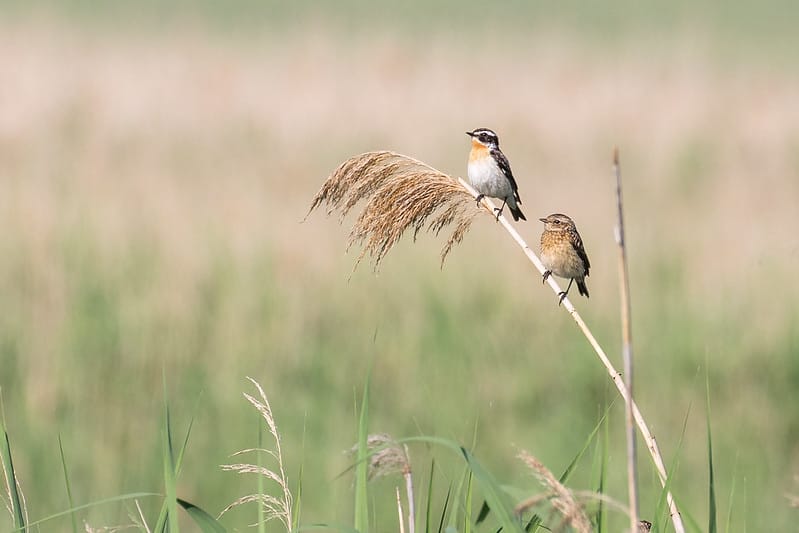
Megafauna | The diversity of Europe’s megafauna is severely degraded compared to the last interglacial period, according to a study in Global Ecology and Biogeography. Researchers analysed the distribution of 48 species of megafauna during the last interglacial – including straight-tusked elephants, cave lions and aurochs – using modelling and fossil records, and compared it to the present. They found that species richness had dropped by 70%, community biomass by 95%, and functional diversity decreased by 80% for herbivores and 65% for carnivores. The authors highlight that this ‘severe defaunation’ cannot be explained by climate differences between the two periods, so it was likely driven by prehistoric Homo sapiens. They conclude that the structure of wild ecosystems today ‘strongly deviates from the evolutionary norm’, and emphasise the importance of ambitious policies of large mammal restoration.
Urban | Greening vacant land in Glasgow could solve issues of dereliction as well as inequalities of food security, according to research by the University of Glasgow. Researchers conducted geospatial analysis of the city to demonstrate the extent of derelict land and the spread of community gardens or allotments throughout the city. They found that only 36% of city residents live within a 10-minute walk of urban agriculture offerings, with most of these being wealthier inner-city residents. In more deprived areas on the outskirts, access to cheap, fresh food is more limited, creating spaces referred to as ‘food deserts’. The researchers found that turning just 15 derelict sites into urban agriculture spots could expand easy access to fresh food to 50% of residents. The Herald covered the research.
Driftwood
Filters | Users of Instagram can now use a set of filters to turn themselves into some of the UK’s most threatened bird species. Inspired by one of Northumberland’s best-known artists and naturalists, Thomas Bewick, artist Hanna Tuulikki has created the augmented reality filters to raise awareness of the plight of the capercaillie, puffin, curlew, lapwing and mistle thrush. Each filter is accompanied by a sound that merges field recordings of the bird’s call with a protest chant. Tuulikki explained that Bewick was celebrated for his bird engravings and printmaking, and in his day was also known for his radical politics. She said: ‘As I learned about his work and life, I began to wonder how he would respond to the devastating biodiversity loss we are experiencing today?’ You can view the filters in this BBC article.
Combustion | A somewhat macabre feature in the Guardian explores the dilemma of how to get rid of a beached whale before it explodes. Whale strandings along the UK coastline are on the rise, and their gigantic size can pose a unique problem of disposing of the carcass – especially when they are liable to explode if left for too long, due to a build-up of gases inside the bodies. Previous efforts to head off this threat by using explosive devices to ‘disintegrate’ the carcass in a controlled manner – one by US engineers in the 1970s, and more recently in Iceland in 2005 – were met with grisly results. In the UK, the more practical and sustainable solution of ‘rendering’ is becoming increasingly popular, which involves separating cetacean remains into chunks, boiling them down, and combining with alcohol to create biodiesel.
Grazing | Ahead of the review due at the end of this month, a feature in the Telegraph takes a balanced look at the ongoing debate between conservationists and farmers over the right to graze sheep on Dartmoor commons. Sheep have grazed Dartmoor since prehistoric times, helping to shape the patchwork ecology of the moor. Farmers argue that it is an historic way of life, and the public services they provide are undervalued. On the other hand, Natural England is concerned that constant grazing is putting unsustainable pressure on the moorland habitats, and has gradually driven away key species including curlews, golden plovers and ring ouzels. The outcome of the review will not only shape the future of the national park, but will also reflect on the wider debate about how to conserve the nation’s uplands.
Further reading:
- In the BBC, a feature delves into the consequences of extreme weather on the Scottish west coast, where a landslide has forced children to take a boat to school.
- The Times has an interview with Chris Packham discussing the various forms of intimidation and abuse he has received for campaigning for nature.
- A feature in the Herald investigates the links between witchcraft, storms and climate change in Scotland.
- The Guardian showcases the best images from the Nature photographer of the year awards, including a kaleidoscopic plant photo by David Maitland in the UK.
- A blog by the Wildlife Trusts asks whether the UK government is keeping its promises in the run-up to COP28.
- The media narrative around rewilding – that it is dominated by capitalists and ‘green lairds’ – is holding back its potential, according to Peter Cairns, executive director of Scotland: The Big Picture. Read about it in the Herald.
- You can look back over the downfall of Thérèse Coffey as environment secretary in the Times.
- A photo article by the BBC illustrates the waxwing irruption currently taking place in Scotland.
- A post by Natural Resources Wales explains how artists are using poetry and live performances on Anglesey to raise awareness of the value of peatland.
- The Times profiles a brewery in southeast London which claims to have created the first truly carbon-negative ale.
- A feature in the Guardian takes a look at the process behind the IUCN red list, and what animals might be falling through the gaps.
- An interiors company has become the second firm in the UK to appoint a ‘nature guardian’ to its board to vote on business decisions. You can read about it in Positive News.
- Modelling by the NFU has shown that the current ELMs offer does not provide a viable financial future for upland farmers.
- A picture essay in the Guardian showcases the gorgeous spectrum of autumn colours at the National Arboretum at Westonbirt.
- In the BBC, read about the man who is collecting wood from trees felled during Storm Ciarán to turn it into guitars.
- An article from Senedd Research explores why time is ‘running out’ for Wales to establish an environmental watchdog.
- In the Guardian, a feature investigates the overnight disappearance of nearly 700 shags from the Isle of May.
Happy days
Wood | A piece in the Brixton Buzz displays the unique work of photographer Max Rush. The London-based artist has been photographing parks and gardens in south London for years, but recently he took his artform to another level by designing and building a specialised camera out of wood from an ancient oak. The idea is to showcase London’s ancient trees in images of precise detail and clarity, using a tool made from the trees themselves. ‘Nature’s best colours and lines don’t need enhancement or digital manipulation,’ Rush writes. ‘When examining the photographs on screen, it’s still with a sense of amazement that I find how closely I can explore every blade of grass or tiny twig.’
Subscribe to our newsletter
Members receive our premium weekly digest of nature news from across Britain.
Comments
Sign in or become a Inkcap Journal member to join the conversation.
Just enter your email below to get a log in link.


